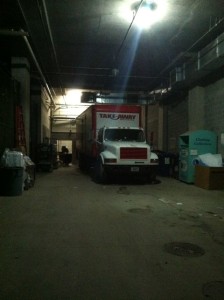 If it’s your first time buying, or living, in a condominium, you will have many questions! Life is different, even than that of an apartment building. Remember, in an apartment, one company owns the ENTIRE building. In a condominium, you own your individual unit, and a percentage of the rest of the building based on the size (square footage) of your condo.
If it’s your first time buying, or living, in a condominium, you will have many questions! Life is different, even than that of an apartment building. Remember, in an apartment, one company owns the ENTIRE building. In a condominium, you own your individual unit, and a percentage of the rest of the building based on the size (square footage) of your condo.
How Do I Move Into A Condo Building?
The policies for moving into a condominium building in Midtown Atlanta are as varied as the buildings themselves. But let’s review some of the most standard policies:
- Elevator Reservations — Yes, you can’t just move in whenever you like. You have to reserve the elevator to move in. Most likely these arrangements are made through your Concierge, but it may also be the Property or Association Manager’s office that handles this. when you reserve the elevator, padding is installed inside the elevator to protect the walls from damage. Also, a reservation is just that…you have the elevator for a certain period of time. It is “locked” and only you use it. This allows you, or your movers to load the elevator, take it to your floor, and then leave it there as they unload it. Be aware, not ALL buildings have this ability, but most do.
- Move In Fees — Indeed, it’s not always FREE to move into a condo building. While most buildings will charge you a deposit for damages, a couple Midtown Atlanta condo buildings have actual FEES you have to pay! While these are a one-time charge, it is important to know this information. Your Buyer’s Agent should find this out for you during the due diligence process or on a Community Association Disclosure.
 The Loading Dock — Another part of a condo building that will vary widely, is the loading dock and where your moving truck can have access to the building. Older buildings, or buildings that were first apartments, and then converted to condominiums may not have ANY loading dock. Your truck may have to park on the street. In this case, if can’t be left unattended by you or the moving company at any time during the unloading process. If the building has a loading dock, ti will depend on how secure the dock area is. Some newer buildings have a loading dock this is much like a garage. The moving van can be parked inside, and the door closed. Depending on what kind of traffic still is in and around the dock, you may need to have someone remain with the truck. (Or the door on the truck can be locked each time.)
The Loading Dock — Another part of a condo building that will vary widely, is the loading dock and where your moving truck can have access to the building. Older buildings, or buildings that were first apartments, and then converted to condominiums may not have ANY loading dock. Your truck may have to park on the street. In this case, if can’t be left unattended by you or the moving company at any time during the unloading process. If the building has a loading dock, ti will depend on how secure the dock area is. Some newer buildings have a loading dock this is much like a garage. The moving van can be parked inside, and the door closed. Depending on what kind of traffic still is in and around the dock, you may need to have someone remain with the truck. (Or the door on the truck can be locked each time.)- Utilities (Electric, Water/Sewer, Cable, Internet, Garbage) — The process to set up these services will also vary from building to building. One consistent item will be garbage, which is paid for as part of your HOA fee. Your other utilities most likely will be your responsibility to have “connected” or placed in your name. A few buildings still include water and sewer charges as part of your monthly HOA fee. However, increased costs are pushing building to “sub-meter” this whereby you are responsible for your individual usage in your condo. Some of the newer buildings include high-speed internet throughout the building so you don’t have to obtain this service. Electric is almost always your responsibility, but again there are a couple exceptions where this utility is billed to you from the HOA on your monthly statement, and you don’t have to make these arrangements. Again, the Community Association Disclosure should have this information on it. If not, ASK!
These are just some of the main questions we are often asked about How Do I Move into a Condo Building! If we think of something we missed, or other details, we’ll be back to update this information!
